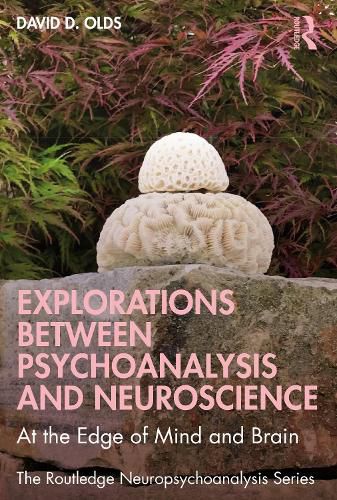Readings Newsletter
Become a Readings Member to make your shopping experience even easier.
Sign in or sign up for free!
You’re not far away from qualifying for FREE standard shipping within Australia
You’ve qualified for FREE standard shipping within Australia
The cart is loading…






Explorations Between Psychoanalysis and Neuroscience brings together the life's work of David Olds, pioneering psychoanalyst, psychiatrist, philosopher, and key figure in neuropsychoanalysis.
Throughout the chapters, the reader is taken on a journey through Olds' theories on psychoanalysis and neuroscience as he develops new ways of examining the brain and human thought. Olds instills in the reader the importance of taking an interdisciplinary approach to psychoanalysis, psychiatry and working with patients. He expands upon his philosophical background and integrates evolutionary biology, neurobiology, cognitive science and semiotics to show the importance of dual aspect monism in neuropsychoanalysis. The theories developed by Olds and presented in this volume will help analysts working with patients facing issues with memory, affect, consciousness, cognition and trauma, among other difficulties.
This book will be essential reading to psychoanalysts and psychiatrists, as well as anybody interested in neuropsychoanalysis and the importance of an interdisciplinary approach to analytic thinking and practice.
$9.00 standard shipping within Australia
FREE standard shipping within Australia for orders over $100.00
Express & International shipping calculated at checkout
Explorations Between Psychoanalysis and Neuroscience brings together the life's work of David Olds, pioneering psychoanalyst, psychiatrist, philosopher, and key figure in neuropsychoanalysis.
Throughout the chapters, the reader is taken on a journey through Olds' theories on psychoanalysis and neuroscience as he develops new ways of examining the brain and human thought. Olds instills in the reader the importance of taking an interdisciplinary approach to psychoanalysis, psychiatry and working with patients. He expands upon his philosophical background and integrates evolutionary biology, neurobiology, cognitive science and semiotics to show the importance of dual aspect monism in neuropsychoanalysis. The theories developed by Olds and presented in this volume will help analysts working with patients facing issues with memory, affect, consciousness, cognition and trauma, among other difficulties.
This book will be essential reading to psychoanalysts and psychiatrists, as well as anybody interested in neuropsychoanalysis and the importance of an interdisciplinary approach to analytic thinking and practice.